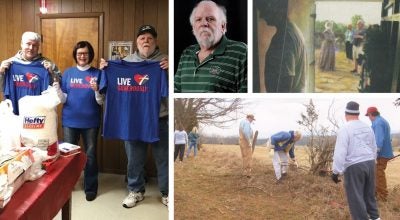Helping those most in need
Published 9:40 am Thursday, April 16, 2015
Myers reflects on career changes
When Gene Myers came to work at the department of job and family services, it was definitely a paper chase. Clients’ information was logged on paper. Applications were taken on paper. File drawers bulged with paper.
What a difference three decades make. Now 90 to 100 percent of all information processed by the DJFS is done electronically, a reality Myers says makes the department able to do more for more.
Clients now use keypads to enter their Social Security number. Caseworkers call up applications on computer screens. Children services workers transmit data through iPads.
“The No. 1 thing I realized is how much technology is used to promote these services,” Myers said. “We are serving more people with fewer people than any time in the history that I am aware of. Child welfare with the iPads takes referrals 24/7. They get the history of the family and take care of that situation very quickly.”
On Wednesday, Myers walked out of the onetime Campbell School building that has housed the DJFS for more than 20 years to enter a new realm for him — retirement.
But before he did, Myers took some time to recall his 30-year career.
“It was still called the welfare department,” he said. “There is stigma with that word.”
Then the department was strung out in three buildings throughout Ironton — Park Avenue where 911 dispatching is; Vernon Street where the Kings’ Daughters Medical Center offices were and the food stamp building.
Today applications can be taken from anywhere in the county — whether it is a Community Action Organization walk-in facility; fax or Internet.
“That is such better service to Lawrence County that I have ever seen in 30 years,” Myers said. “Before someone would have to wait in lines for hours.”
Despite statistics that say Lawrence County has an unemployment rate of 6.3 percent, one-third of the county’s population will walk through the doors of the DJFS at least once this year. Many will seek the agency’s help multiple times.
“It used to be there was not an expanded Medicaid,” Myers said. “If you were eligible, you were eligible. If you were not, you weren’t. Now there are stopgaps. There are hundreds of different programs with 50 different funding streams.”
Myers has witnessed the transformation of the mission of some programs like those coming out of the welfare-to-work movement that started 20 years ago. Now the department works to teach clients how to get a job and keep a job, and even something as simple as showing up to work on time. Benefits like food stamps are no longer automatically dispensed to clients just on need. They must work to get them.
That program was expanded to bring in the 16-to-24-year olds for summertime jobs with no cost to area employers. Working with that age group may expand to year-round.
Throughout those 30 years the director said he has daily empathized with those his agency serves.
“I am very fortunate not to be sitting on the other side,” he said. “We tend to forget that. Thirty years ago I happened to get in this job and here is my career.”
Right now Myers has no immediate plans for the future, but does have advice for his successor, who will be chosen by the county commissioners in the next few weeks.
“Don’t ever forget what we are supposed to be doing — providing services for the most vulnerable citizens in Lawrence County,” he said.




